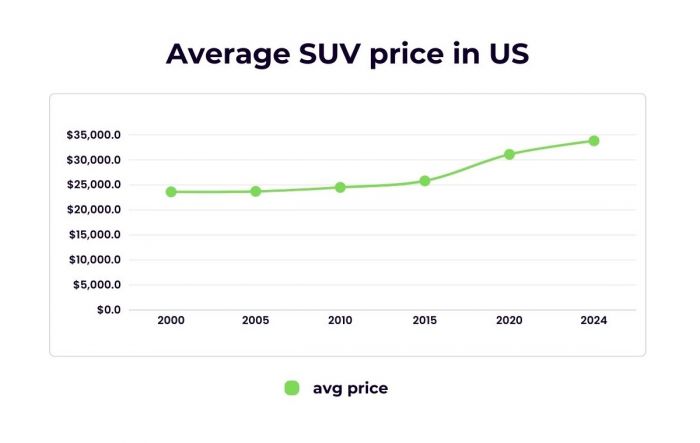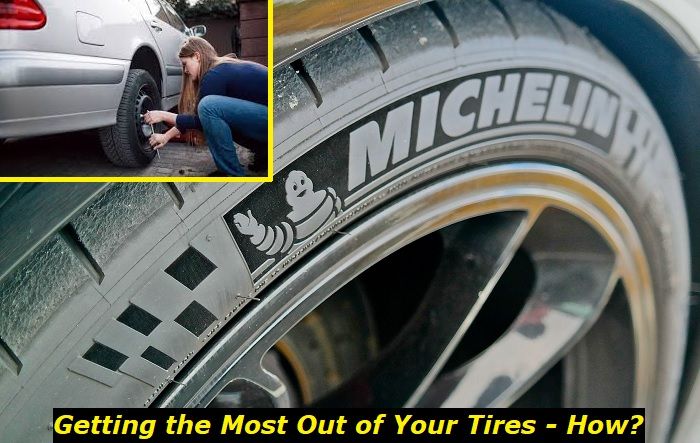Honda Odyssey is a capable SUV that affords you three rows. It is a practical car for a large family or a trip out in the countryside with friends. It has a large cabin, is fuel efficient, and boasts top crash scores. It is a car that you will feel safe driving. But like every other vehicle, the Odyssey can give you issues once in a while.
Emission system problem message highlights
- Common reasons:catalytic converter problems, oxygen sensor faulty, issues with fuel combustion
- How to fix:read the codes, inspect the emission system units
- Possible consequences:you won't pass the fog test
- Priority level:High
- Can you drive?Yes
- DIY repair:Impossible
- Repair price range:$300-$1,500

What is an emissions system in vehicles?
The automobile industry has, over the years, taken great strides toward making the vehicles on our roads safe and environmentally friendly. Unlike in the 70s or 80s when it was normal to find a car bellowing smoke on the highways, nowadays, vehicles have drastically reduced gaseous emissions to the air. This has been made possible by the introduction and tweaking of the emission systems by car manufacturers.
Two-thirds of engine pollutants are exhaust emissions. The emissions system is designed to reduce harmful emissions to acceptable levels. The crankcase releases unburned hydrocarbons and some traces of carbon monoxide. The exhaust pipe releases oxides of nitrogen, sulfur, unburned hydrocarbons, alcohols, and traces of some acids.
Honda Odyssey uses the exhaust gas recirculation (EGR) system as part of its exhaust system. In the EGR system, a certain amount of exhaust gases is redirected back to the combustion chamber and mixed with a fresh air-fuel mixture. The redirected gases help reduce the temperature of combustion, which is essential in lowering nitrogen oxides production.
Further combustion happens in the catalytic converter. The catalytic converter has an insulated chamber containing ceramic pellets with a thin layer of special metals. When the exhaust gases pass through the honeycomb chamber, the special metals act as catalysts and induce carbon monoxide, nitrogen oxides, and other harmful pollutants in water vapor, nitrogen, and carbon dioxide. The final exhaust emissions from your Honda Odyssey will be safe for the environment.
What does the "emissions system problem" mean?
When a part of the emissions systems in your Honda Odyssey malfunctions or fails, you are likely to see the "emissions system problem" message on the instrument cluster. The check engine light will also pop up. This message could mean a sensor malfunctioning, a faulty catalytic converter, or you may have forgotten to tighten the fuel tank cap properly. For this reason, you must attend to this problem as soon as possible.
What causes the "emissions system problem"?
The emissions system, as described earlier, is extensive and consists of many parts. Let us explore what causes the message to pop up on the dashboard.
1) Untightened gas tank cap
Whenever you visit the gas station to refuel, you must open the tank so that the pump nozzle can dispense fuel into the tank. After filling up the tank, you should tighten the fuel tank cap before snapping back the gas cap. Tighten the fuel tank cap clockwise, and you should hear a click.
After taking their cars to a mechanic, some Honda Odyssey owners were told the issue was a failure to tighten the fuel tank cap. When the fuel cap is left unfastened, fuel will escape from the tank by evaporation. The emission system will detect this escape and notify you by displaying the 'emissions system problem' on the dashboard. The check engine light should also illuminate.
Solution
When you tighten the cap correctly, the message and the check engine should go away. If the message doesn't go away after fastening the cap, use an OBD II scanner to erase the associated errors.
2) A faulty catalytic converter
As highlighted earlier, the catalytic converter plays a crucial role in the emission system. It is a circular metallic object found under the car and is part of the exhaust pipe. The catalytic converter's input gases include nitrogen oxides, carbon monoxide, sulfur, and other harmful pollutants that originate from the engine where combustion takes place.
When the gases from the engine enter the catalytic converter, special metals such as palladium and platinum react with them. Secondary combustion does happen in the catalytic converter when the gases pass through the honeycomb metal beads. The end product includes carbon dioxide, water vapor, and nitrogen, all of which are components of the air we breathe.
The catalytic converter can become faulty, which will then activate the emission system to give you a warning message on the dash. It can clog up or wear out because of usage. In most cases, however, a faulty catalytic converter points to another defective component. Some of the causes of a faulty converter include;
- Faulty check valve
- Defective fuel injector
- Sticking float
- Bad spark plugs
- Incorrect fuel mixture
- Incorrect timing and
- A malfunctioning oxygen sensor
Solution
A faulty catalytic converter needs to be replaced as soon as possible. The underlying causes of its malfunction should also be addressed to avoid future catalytic converter issues. In some cases, repair can be done if the catalytic converter is not extremely damaged or smells of sulfur.
3) A bad oxygen sensor
The oxygen sensor monitors the amount of unburned oxygen in the exhaust as exhaust gases leave the engine. Monitoring these levels allows for a chance to measure the fuel mixture. The car's computer then knows whether the fuel mix is lean (excess oxygen) or rich (insufficient oxygen).
A faulty oxygen sensor will cause the 'emissions system problem' to appear on the dash. Other indicative symptoms include;
- Increased fuel consumption
- Misfiring spark plugs
- Engine stalling rough idling
Solution
An OBD II scanner is usually necessary to read an oxygen sensor error code. Replacing the sensor is the only solution. A faulty oxygen sensor is the most common cause of the 'emissions system problem.'
4) Faulty exhaust manifold leak
The exhaust manifold is attached to the engine. It collects all the exhaust gases from the engine and directs them to the catalytic converter. A leak in this manifold is rare for a relatively new car. However, when such a leak happens, the engine will loudly howl, and you will hear a tapping sound can be heard from the engine. Poor acceleration, check engine light, and vehicle acceleration are some telltale signs to look out for.
Immediate attention is necessary when the exhaust manifold leaks. Driving your Odyssey with a leaking exhaust manifold can burn the exhaust valve and damage the catalytic converter and oxygen sensors.
Solution
Driving your car when the exhaust manifold is leaking is almost impossible. The noise will attract so much attention you will be uneasy. Moreover, it is illegal because your car will emit toxic gases into the environment. Take your car to a professional who will do the necessary repairs.
5) Dirty air filter
A dirty air filter will reduce the air supplied to the engine. This will lead to an imbalanced air-fuel ratio which leads to unburned fuel. As more fuel remains unburned, soot builds up, and this causes mounds on spark plug tips. The spark plugs cannot ignite the air-fuel mixture properly, causing the car to jerk and misfire.
Solution
The air filter should be replaced at every service interval or as Honda recommends. Failure to regularly service your car, as advised in the user manual, can lead to disastrous and costly issues.
6) A faulty error code
Once in a while, your Honda Odyssey PCM can record an error code by mistake. In other words, the onboard diagnostics system can misdiagnose an issue and cause the 'emission system problem' message to pop up.
Before you can dismiss the issue to be a wrong code, ensure that all emission system components are okay. This can best be done by a professional mechanic who is likely to be thorough.
How to fix the "emissions system problem"
Whenever the 'emission system problem' message appears on your car's dashboard, you should address the issue as soon as possible. Given the possible causes of the warning message, it should be easy for you to diagnose the issue. Checking every other emissions system component is the safest way to fix the problem. Once the root cause has been resolved, the warning message on the dashboard should go. You can use an OBD II scanner to erase the source error code.
Conclusion
Honda has invested in ultra-modern technology, which helps its vehicles remain competitive. The emissions system in the Honda Odyssey is very effective because even failing to fasten the fuel tank cap will let the car warn you of this mistake.
The Odyssey emission system is designed to keep your vehicle safe and abide by the laws of the land. If you ignore the 'emission system problem' message, you risk further damage to the car. You will witness poor fuel efficiency and break the law since exhaust emissions will be more than the law stipulates.
About the authors
The CarAraC research team is composed of seasoned auto mechanics and automotive industry professionals, including individuals with advanced degrees and certifications in their field. Our team members boast prestigious credentials, reflecting their extensive knowledge and skills. These qualifications include: IMI: Institute of the Motor Industry, ASE-Certified Master Automobile Technicians; Coventry University, Graduate of MA in Automotive Journalism; Politecnico di Torino, Italy, MS Automotive Engineering; Ss. Cyril and Methodius University in Skopje, Mechanical University in Skopje; TOC Automotive College; DHA Suffa University, Department of Mechanical Engineering






Add comment